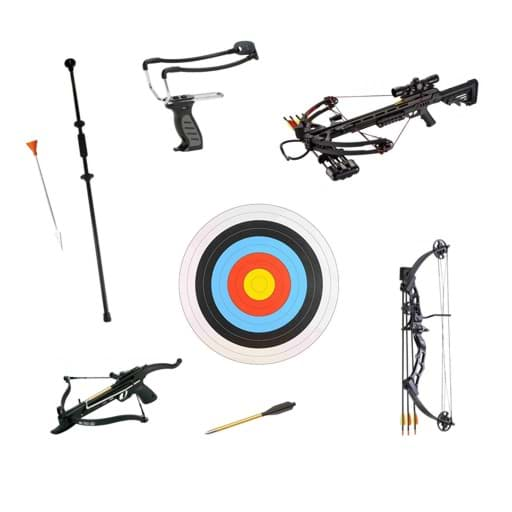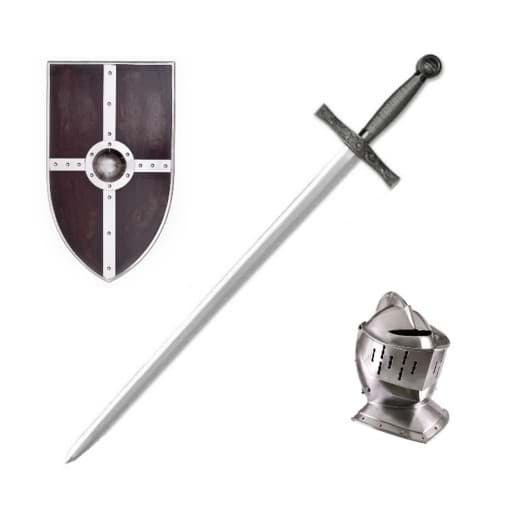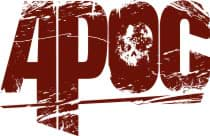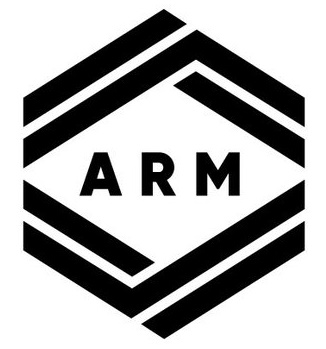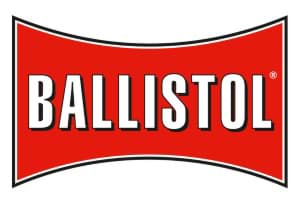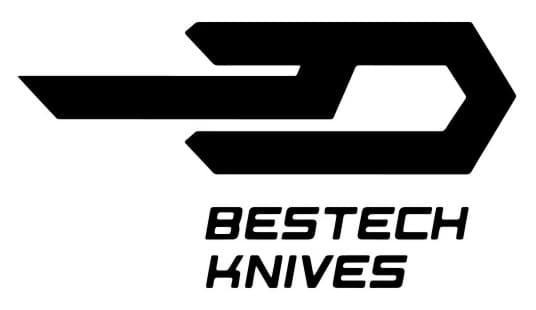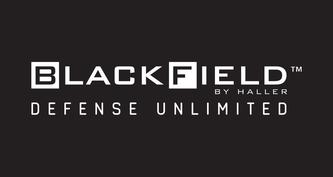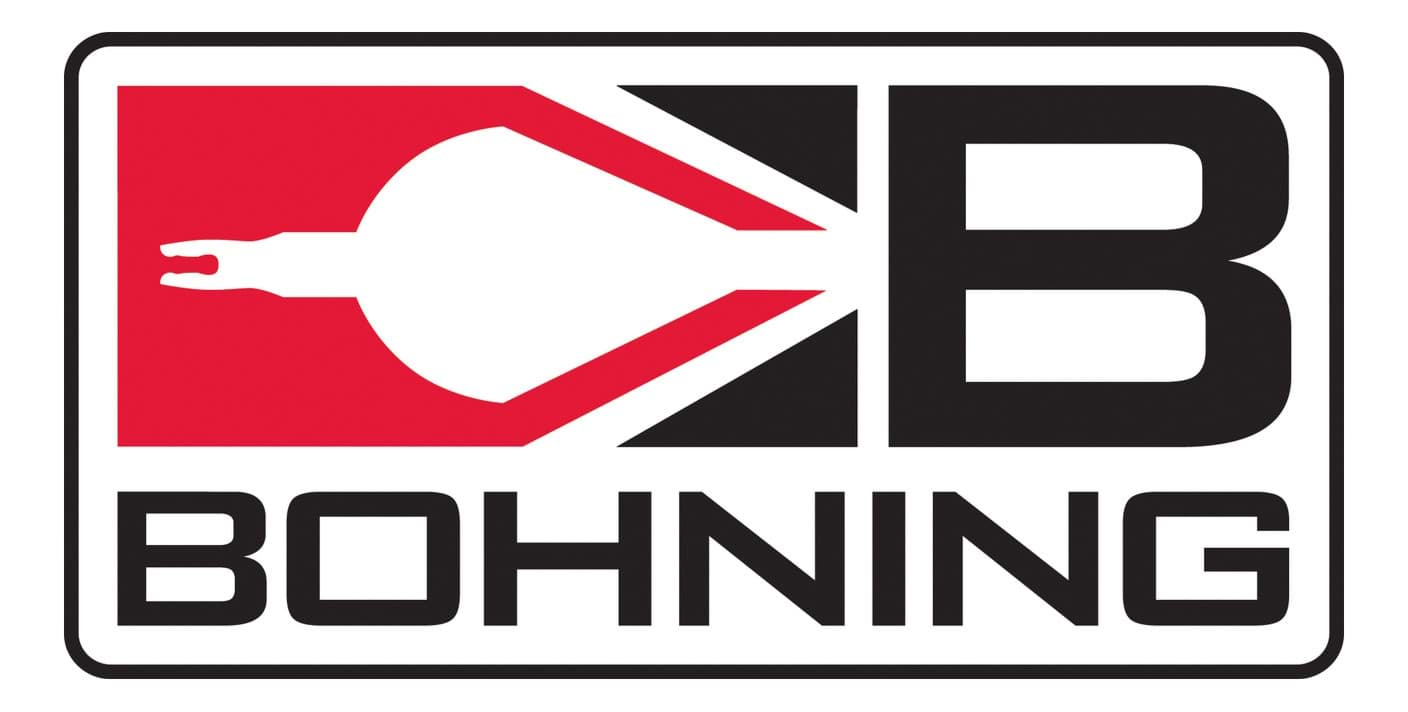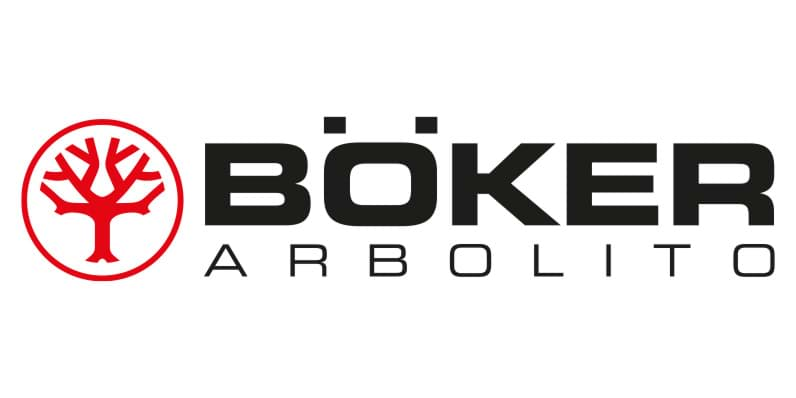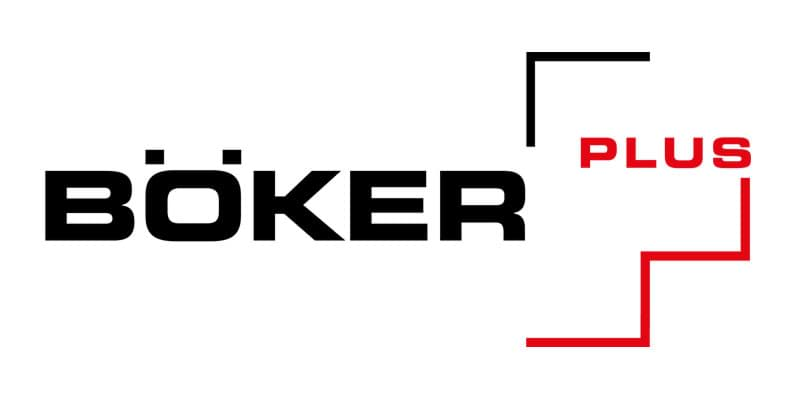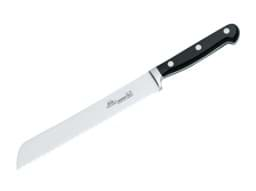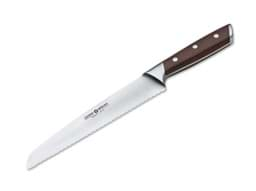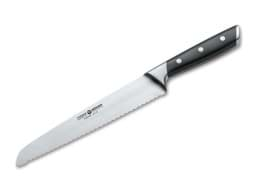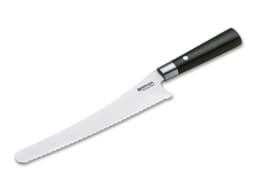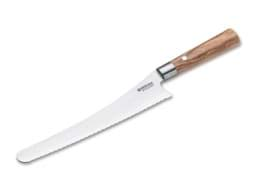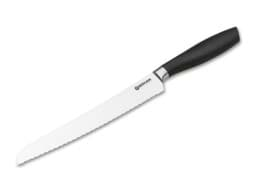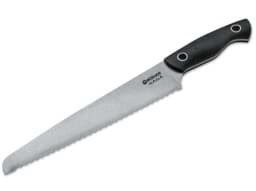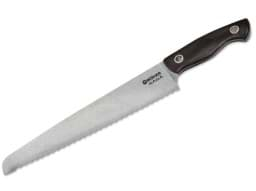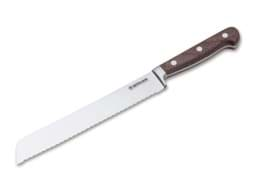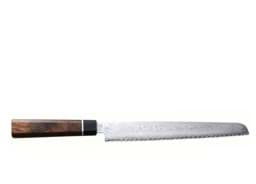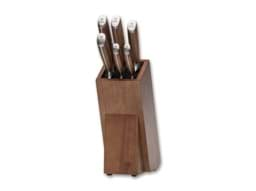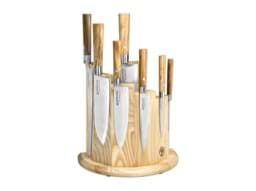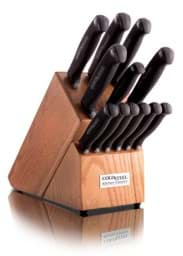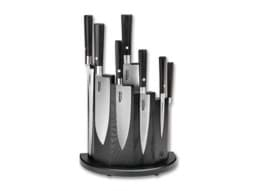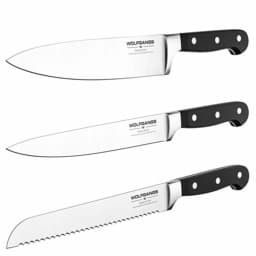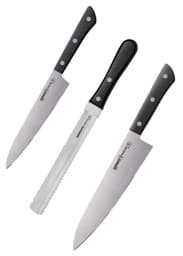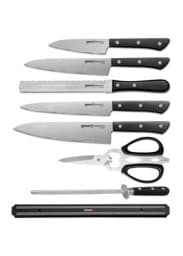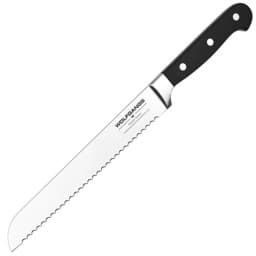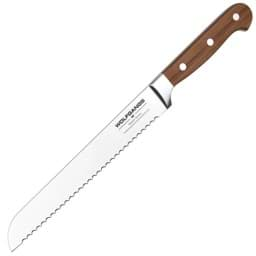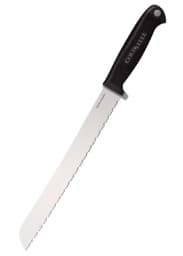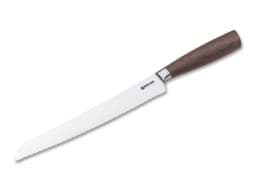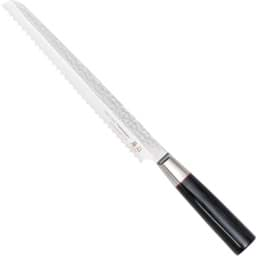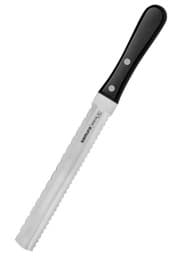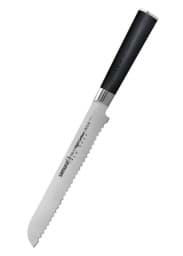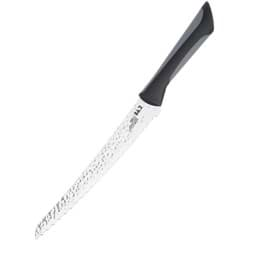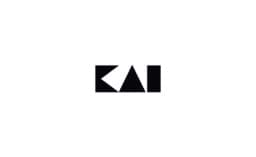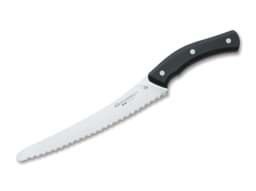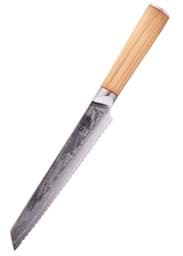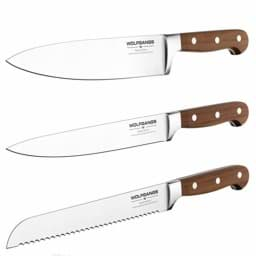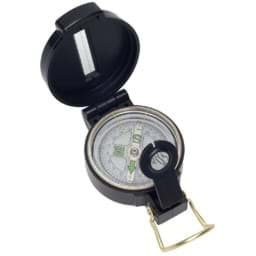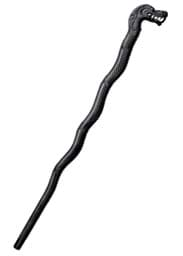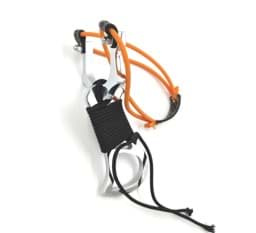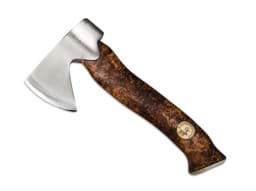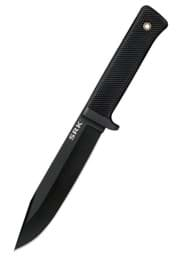Bread Knives
1-28 of 28
Due Cigni - Florence Bread Knife
Due Cigni Florence Bread Knife ► High-quality bread knife ✓ 20.5 cm long blade ✓ X50CrMoV15 steel ✓ Handle made of POM ✓ Weight 170 g ✓ "buy now in Switzerla...
* Prices incl. VAT, plus shipping
Böker - Forge Wood Bread Knife
Böker Forge Wood Bread Knife ► High-quality bread knife ✓ 22.0 cm long blade ✓ X50CrMoV15 steel ✓ Maple wood handle ✓ Weight 274 g ✓ "buy in Switzerland!"
* Prices incl. VAT, plus shipping
Böker - Forge Bread Knife
Böker Forge Bread Knife ► High-quality bread knife ✓ 22.0 cm long blade ✓ X50CrMoV15 steel ✓ Special plastic handle ✓ Weight 290 g ✓ Buy now!
* Prices incl. VAT, plus shipping
Böker - Damascus Black Bread Knife
Böker Damascus Black Bread Knife ► Damascus Bread Knife ✓ 23.5 cm long blade ✓ Damascus steel ✓ Layered wood handle ✓ Weight 130 g ✓ "buy now in Switzerland!"
* Prices incl. VAT, plus shipping
Böker - Damascus Olive Bread Knife
Böker Damascus Olive Bread Knife ► Damascus Bread Knife ✓ 23.5 cm long blade ✓ Damascus steel ✓ Handle made of olive wood ✓ Weight 130 g ✓ "buy now in Switze...
* Prices incl. VAT, plus shipping
Böker - Core Professional Bread Knife
Böker Core Professional Bread Knife ► High-quality bread knife ✓ 22.0 cm long blade ✓ X50CrMoV15 steel ✓ Plastic handle ✓ Weight 145 g ✓ Buy now!
* Prices incl. VAT, plus shipping
Böker - Saga G10 Stonewash Bread Knife
Böker Saga G10 Stonewash Bread Knife ► High-quality bread knife ✓ 23.5 cm long blade ✓ 440C Steel ✓ Handle made of G10 ✓ Weight 251 g ✓ "buy now in Switzerla...
* Prices incl. VAT, plus shipping
Böker - Saga Grenadill Bread Knife
Böker Saga Grenadill Bread Knife ► High-quality bread knife ✓ 23.5 cm long blade ✓ 440C Steel ✓ Wooden handle ✓ Weight 251 g ✓ "buy now in Switzerland!"
* Prices incl. VAT, plus shipping
Böker - Heritage Bread Knife
Böker Heritage Bread Knife ► Bread Knives ✓ 20.5 cm long blade ✓ X50CrMoV15 steel ✓ Walnut wood handle ✓ Weight 163 g ✓ "buy now in Switzerland!"
* Prices incl. VAT, plus shipping
Suncraft - Senzo Black Bread Knife
Suncraft Senzo Black Bread Knife ► 22 cm long blade ✓ stainless damascus ✓ 33 layers core steel VG10 ✓ 60HRC ✓ Handle made of pakkawood ✓ Weight 135g ✓ Buy now!
* Prices incl. VAT, plus shipping
Böker - Forge Wood Set 2.0
Böker Forge Wood Set 2.0 ► High-quality knife set ✓ X50CrMoV15 steel ✓ Maple wood handles ✓ "buy now in Switzerland!"
* Prices incl. VAT, plus shipping
Böker - Damascus Olive Set with Knife Block 8-Piece
Böker Damascus Olive Set with Knife Block, 8 pieces ► Damascus Knife Set ✓ Damascus steel ✓ Handle made of olive wood ✓ "buy now in Switzerland!"
* Prices incl. VAT, plus shipping
1-2 Arbeitstage
CHF 1’078.65 *
Niedrigster:
CHF 1’269.00 *
You save:
CHF 190.35
Cold Steel - Kitchen Classics Knife Set with Block
Set of 6 different kitchen knives and 6 steak knives with blades made of German 4666 stainless steel and optimized handles made of Zy-Ex™ and Kray-Ex™. The K...
* Prices incl. VAT, plus shipping
Böker - Damascus Black Set with Knife Block 8-Piece
Böker Damascus Black Set with Knife Block, 8 pieces ► Damascus Knife Set ✓ Damascus steel ✓ Layered wood handle ✓ "buy now in Switzerland!"
* Prices incl. VAT, plus shipping
Odenwolf - Classic ABS Kitchen Knife 3-Piece Set
Odenwolf Classic ABS kitchen knife set of 3 pieces ► Chef's Knife, Carving Knife & Bread Knife ✓ Blades made of X50 1.4116 steel ✓ Handles made of ABS ✓ "buy...
* Prices incl. VAT, plus shipping
Samura - Harakiri 3-Piece Knife Set
Samura Harakiri 3-piece knife set ► Consists of vegetable knife, utility knife, and chef's knife ✓ AUS-8 Stainless Steel ✓ "buy now in Switzerland!"
* Prices incl. VAT, plus shipping
Samura - Harakiri Super Set 8-Piece
Samura Harakiri Super Set 8-piece kitchen set ► Versatile kitchen knife set ✓ AUS-8 Steel ✓ Handles made of ABS ✓ "buy now in Switzerland!"
* Prices incl. VAT, plus shipping
Odenwolf - Classic ABS Bread Knife
Odenwolf Classic ABS Bread Knife ► 20 cm long blade ✓ X50 1.4116 Steel ✓ ABS handle ✓ Weight 175 g ✓ "buy now in Switzerland!"
* Prices incl. VAT, plus shipping
Odenwolf - Classic Walnut Bread Knife
Odenwolf Classic Walnut Bread Knife ► 20 cm long blade ✓ X50 1.4116 Steel ✓ ABS handle ✓ Weight 165 g ✓ "buy now in Switzerland!"
* Prices incl. VAT, plus shipping
Cold Steel - Kitchen Classics Bread Knife with Optimized Handle
Bread Knife Kitchen Classics with 22.8 cm long blade made of German 4116 steel and handle made of Zy-Ex™ & Kray-Ex™ by Cold Steel
* Prices incl. VAT, plus shipping
Böker - Core Walnut Bread Knife
Böker Core Walnut Bread Knife ► High-quality bread knife ✓ 20.7 cm long blade ✓ X50CrMoV15 steel ✓ Walnut wood handle ✓ Weight 114 g ✓ Buy now!
* Prices incl. VAT, plus shipping
Suncraft - Senzo Bread Knife
Haller Senzo Bread Knife ► 22 cm long blade ✓ Damascus VG110 stainless steel ✓ Handle made of pakkawood ✓ Weight 170 g ✓ "buy now in Switzerland!"
* Prices incl. VAT, plus shipping
Samura - Harakiri Saw Knife 180 mm
Samura Harakiri Saw Knife 180 mm ► 20.0 cm long blade ✓ AUS-8 Stainless Steel ✓ ABS handle ✓ Weight 158 g ✓ "buy now in Switzerland!"
* Prices incl. VAT, plus shipping
Samura - MO-V Bread Knife 23 cm
Samura MO-V series bread knife with 103 cm long serrated blade made of AUS-8 steel and elegant G10 handle
* Prices incl. VAT, plus shipping
Kai - Luna Bread Knife 22 cm
Bread knife with a 22 cm long stainless steel blade from the Luna kitchen knife series by Kai
* Prices incl. VAT, plus shipping
Due Cigni - Arne HPL Bread Knife
Due Cigni Arne HPL Bread Knife ► High-quality bread knife ✓ 23.0 cm long blade ✓ 272C27 Steel ✓ Handle made of ✓ Weight 230 g ✓ "buy now in Switzerland!"
* Prices incl. VAT, plus shipping
Klingenreich - Damascus Bread Knife
Blade-rich Damascus Bread Knife ► 19.5 cm long blade ✓ Damascus, 67 layers steel ✓ Handle made of olive wood ✓ Weight 181 g ✓ "buy now in Switzerland!"
* Prices incl. VAT, plus shipping
Odenwolf - Classic Walnut Kitchen Knives 3-Piece Set
Odenwolf Classic Walnut Kitchen Knife Set of 3 ► Chef's Knife, Carving Knife & Bread Knife ✓ Blades made of X50 1.4116 steel ✓ Walnut handles ✓
* Prices incl. VAT, plus shipping
Recently viewed products
Haller - Compass
CHF 9.00 *
Cold Steel - Dragon Walking Stick
CHF 128.00 *
Lu.M.B.Ro - Lugar 6.8 Full Metal Chrome Scheletor
CHF 59.00 *
Karesuando - Unna Aksu Brun Hatchet
CHF 339.00 *
Cold Steel - Rescue Knife SRK with SK-5 Carbon Steel Blade
CHF 96.00 *
TOPS Knives - Rapid Strike Double Edge
CHF 229.00 *

